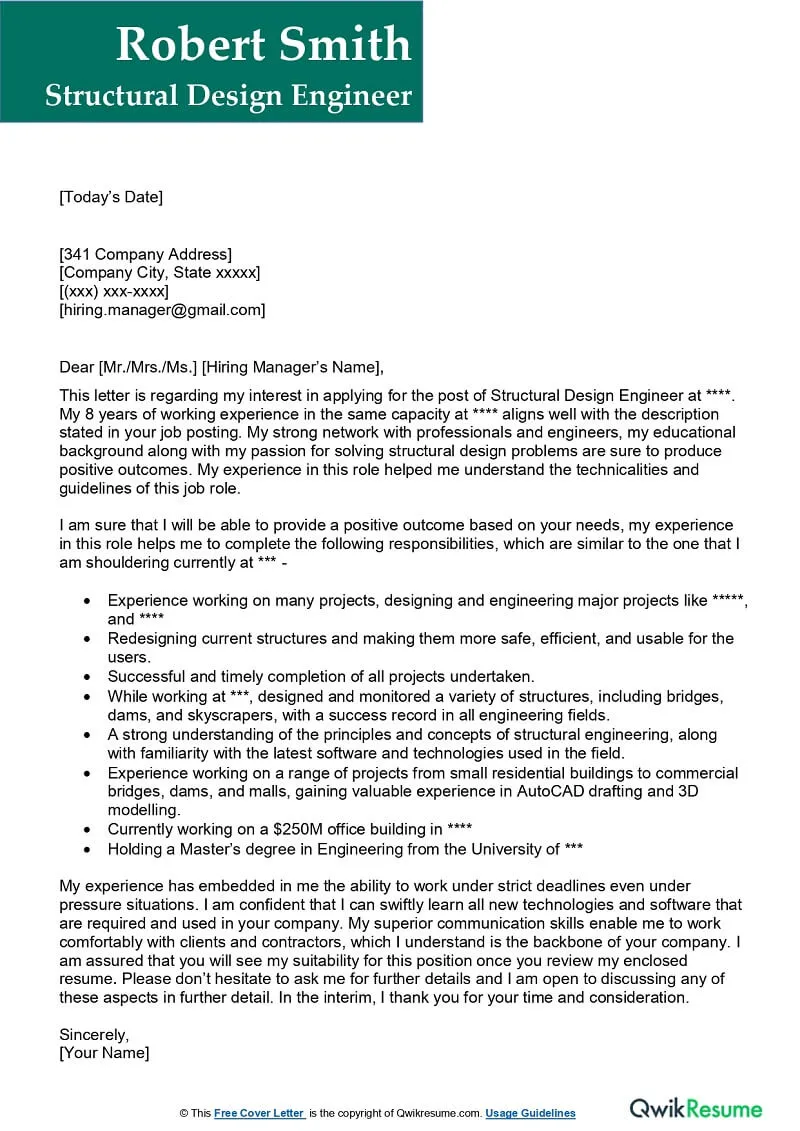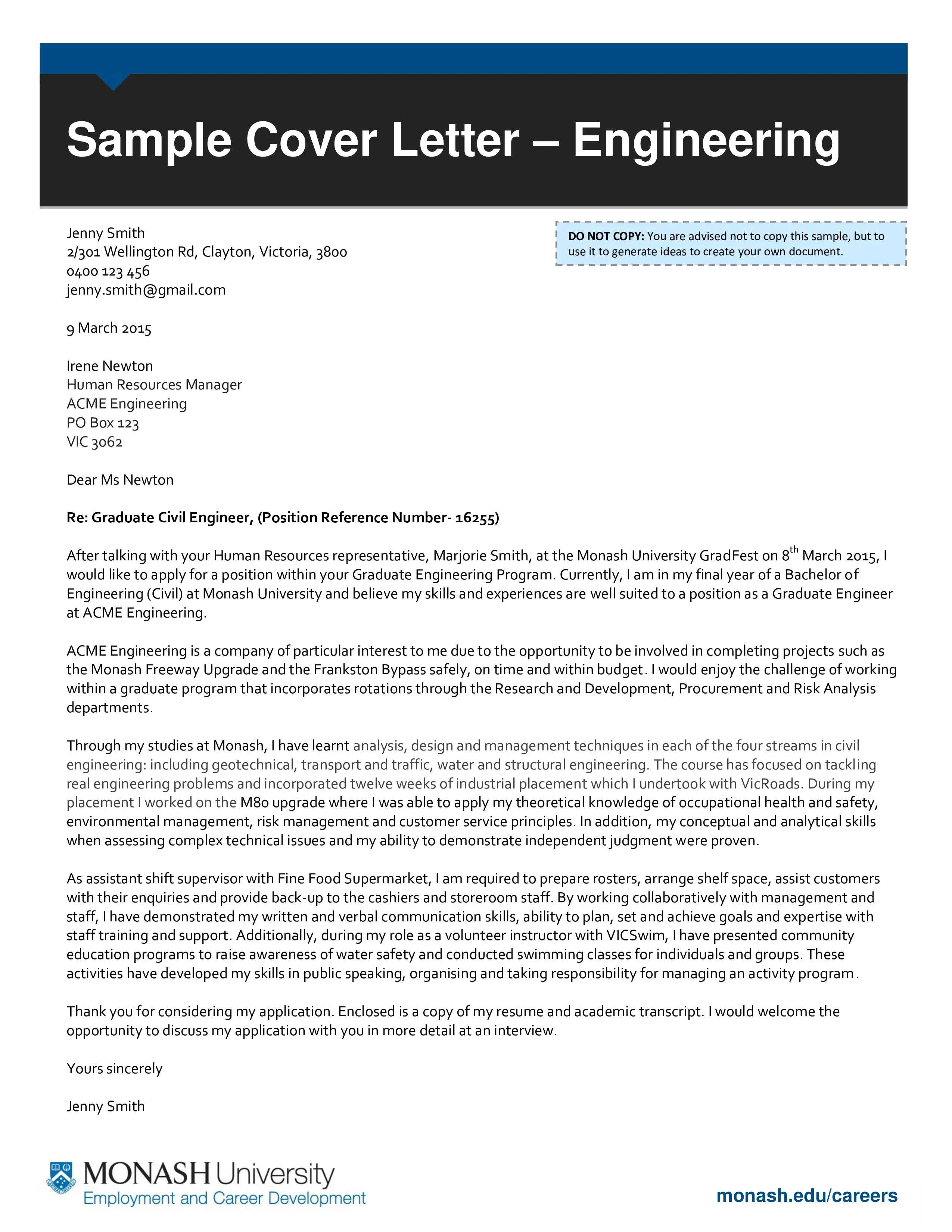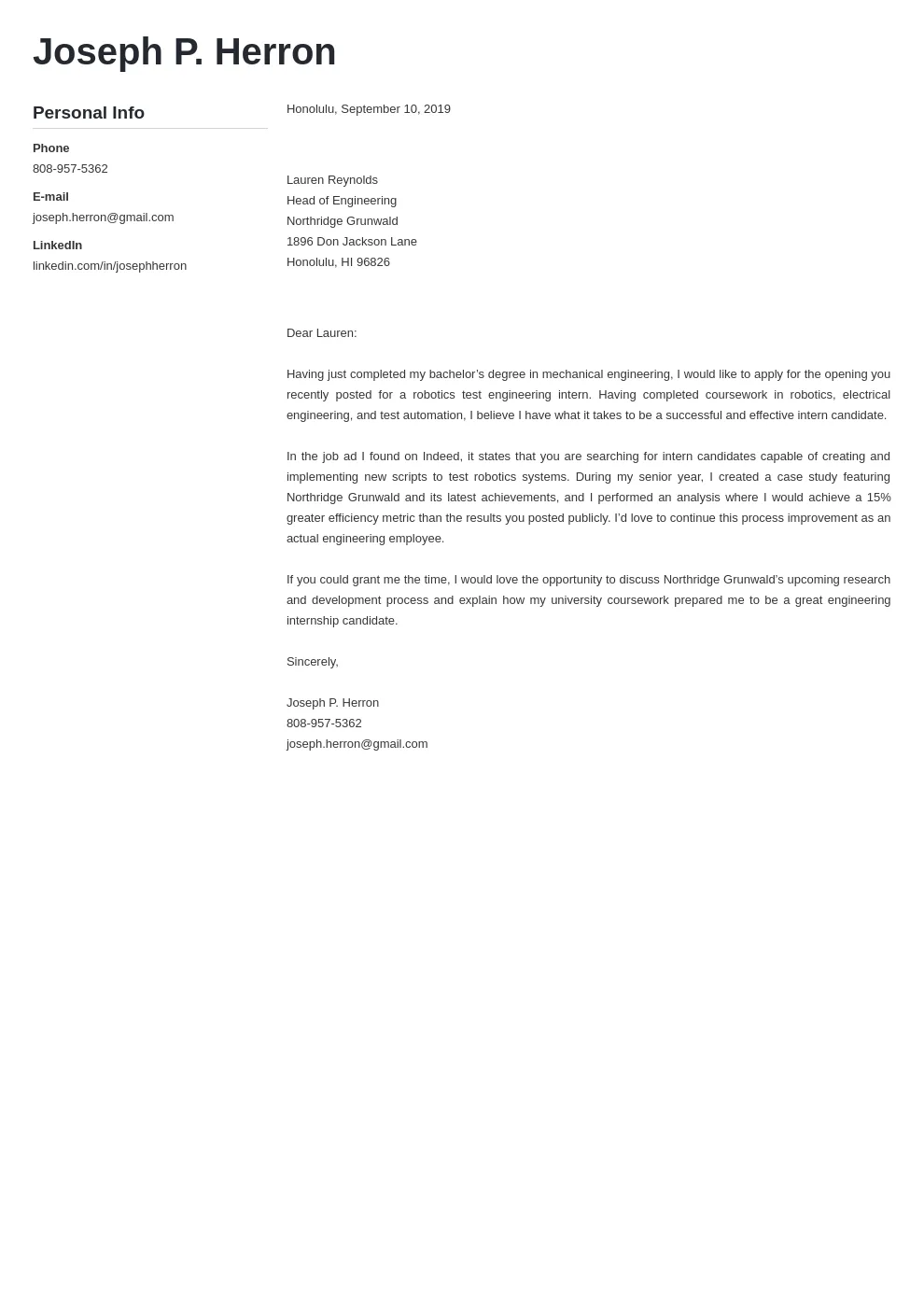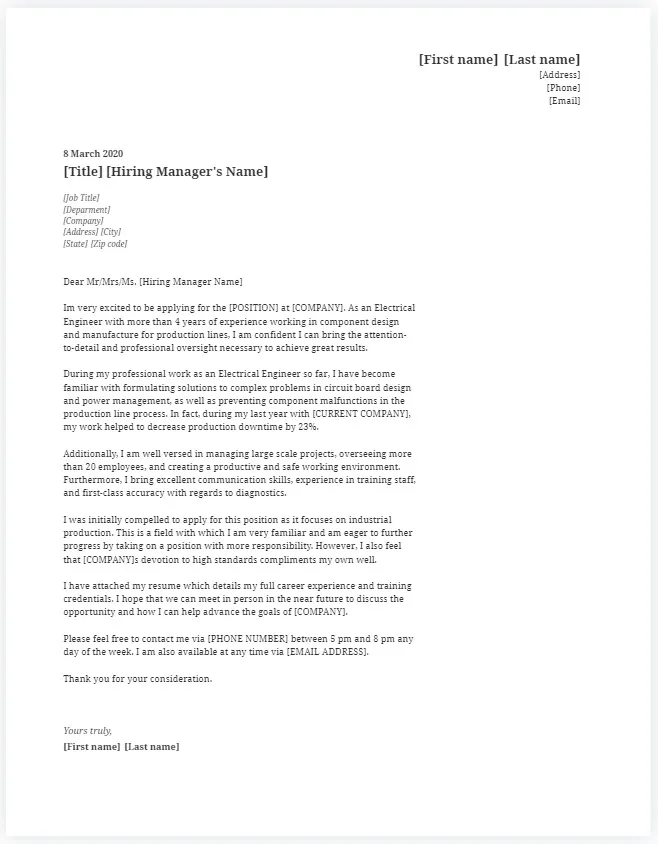Why a Stellar Engineering Cover Letter Matters
In the competitive world of engineering, a well-crafted cover letter is more than just a formality; it’s your first opportunity to make a lasting impression and set yourself apart from other applicants. It is a crucial document that accompanies your resume and provides potential employers with a glimpse into your personality, your passion for the field, and your unique qualifications. A compelling cover letter can significantly increase your chances of landing an interview, while a generic or poorly written one can easily lead to your application being overlooked. It serves as your personal introduction, allowing you to showcase your communication skills, highlight your relevant experiences, and express your genuine interest in the specific role and the company. By effectively articulating your value proposition, you can demonstrate why you are the ideal candidate and what you can bring to the table. This guide will walk you through the essential elements of creating an impactful engineering cover letter that grabs attention and increases your chances of success.
Grabbing Attention Introduction
The introduction is your initial chance to captivate the reader and make them want to learn more about you. Avoid generic opening lines like, ‘I am writing to express my interest…’ Instead, begin with a powerful statement that immediately grabs their attention. Consider mentioning a specific project you worked on, a significant achievement, or your passion for engineering. Briefly state the position you are applying for and, if possible, mention where you found the job posting. Your introduction should be concise and enthusiastic, setting the tone for the rest of the letter and making the hiring manager eager to continue reading. The goal is to create an immediate connection and demonstrate that you have the skills and enthusiasm the company is seeking. A great intro is a promise of the value you can provide, it’s what makes the reader keep reading.
Key Elements of an Engineering Cover Letter

A successful engineering cover letter goes beyond simply listing your skills and qualifications. It’s about storytelling, demonstrating how your experiences align with the job requirements and showcasing your potential contributions to the company. The key is to thoughtfully structure and present your information to create a narrative. This section will explore the critical elements you need to include in your cover letter to make a strong impact and secure an interview. Remember that the best cover letter will be tailored to the specific role and the specific company, always keep this in mind when you are writing your letter.
Highlighting Your Skills and Experience
This is where you showcase the technical skills, knowledge, and experience most relevant to the job description. Instead of just listing these skills, provide specific examples of how you’ve used them in past projects or roles. For instance, instead of stating ‘Proficient in AutoCAD,’ you could write, ‘Utilized AutoCAD to design and create detailed blueprints for the XYZ project, resulting in a 15% reduction in material costs.’ Quantifiable examples are significantly more persuasive than a list of skills. Focus on skills mentioned in the job description, aligning your experience with what the company is looking for. Remember to demonstrate, don’t just tell. Provide concrete examples of the use of the skills.
Quantifying Your Achievements
Quantifiable achievements are crucial for demonstrating the impact you’ve made in previous roles. Use numbers, percentages, and specific data to showcase your accomplishments. For example, ‘Improved project efficiency by 20%’ or ‘Led a team of 5 engineers to successfully complete the project ahead of schedule.’ These metrics provide concrete evidence of your abilities and help the hiring manager understand the value you can bring to their company. Use the STAR method (Situation, Task, Action, Result) to structure your examples and clearly articulate your accomplishments. This approach will make your accomplishments more impactful.
Tailoring Your Cover Letter

A generic cover letter rarely impresses. Tailoring your cover letter to each specific job application is essential. This involves researching the company, understanding the role, and highlighting the skills and experiences that are most relevant to the position. Customize your letter to align with the specific requirements mentioned in the job description. This shows that you’ve taken the time to understand the company’s needs and are genuinely interested in the role. This demonstrates your attention to detail and your commitment to the application process. If possible, mention how your skills and experience align with the company’s goals or values.
Researching the Company and Role
Before you begin writing, thoroughly research the company and the specific role. Visit the company’s website, review their social media profiles, and read any recent news articles or press releases about the company. This research will provide you with valuable insights into the company’s culture, values, and recent projects. Use this information to tailor your cover letter, demonstrating that you understand the company’s mission and are enthusiastic about contributing to its success. Understand the role’s responsibilities and the skills they are seeking. This level of detail shows initiative and genuine interest.
Matching Skills to Job Requirements
Carefully review the job description and identify the key skills and qualifications the employer is seeking. Then, align your skills and experience with these requirements. Provide specific examples that demonstrate how you have utilized these skills in previous roles or projects. Use keywords from the job description throughout your cover letter. This helps the hiring manager quickly see how your skills and experience match the requirements. Explain how your skills and experience meet or exceed the job’s expectations and how you can help the company achieve its goals.
Formatting and Structure of Your Letter

The structure of your engineering cover letter is as important as its content. A well-organized and easy-to-read letter will ensure that your qualifications are presented effectively and professionally. Pay close attention to formatting, layout, and the overall flow of information. The letter should be visually appealing and free of errors, making it easy for the hiring manager to follow. A clear structure helps the hiring manager quickly find and understand the key information you are presenting. Use a professional and readable font like Arial or Times New Roman. Proper formatting and structure reflects your attention to detail and professionalism.
Header Information
Your header should include your contact information, such as your name, address, phone number, and email address. Make sure this information is accurate and up-to-date. Also, include the date and the hiring manager’s name and title, if known. If you don’t know the hiring manager’s name, use a general salutation like ‘Dear Hiring Manager.’ Including the recipient’s name shows you are paying attention and makes the letter more personal. Ensure your contact information is easy to read and clearly presented.
Salutation
Start your cover letter with a professional salutation. ‘Dear Mr./Ms./Mx. [Last Name]’ is a standard and appropriate choice. If you don’t know the hiring manager’s name, ‘Dear Hiring Manager’ or ‘Dear [Company Name] Hiring Team’ are acceptable alternatives. Avoid generic salutations like ‘To Whom It May Concern,’ as they can appear impersonal and less engaging. Addressing the recipient directly shows that you have taken the time to research the company and the role. Always spell the recipient’s name correctly.
Body Paragraphs

The body paragraphs are the core of your cover letter, where you showcase your skills, experience, and enthusiasm for the role. Organize your paragraphs logically, starting with an engaging introduction that captures the reader’s attention. Then, elaborate on your skills and achievements, using specific examples to demonstrate how you have contributed to previous projects or roles. Highlight your qualifications, align them with the job description, and provide tangible evidence of your abilities. Use clear, concise language and keep your paragraphs focused and easy to read. Each paragraph should have a clear purpose, supporting your overall message and emphasizing your value as a candidate. Make sure your paragraphs flow smoothly.
The Closing of Your Cover Letter
Conclude your cover letter with a strong closing statement. Reiterate your interest in the position and express your enthusiasm for the opportunity. Thank the hiring manager for their time and consideration. Include a call to action, such as ‘I look forward to the opportunity to discuss my qualifications further’ or ‘I am eager to learn more about this exciting opportunity.’ End with a professional closing, such as ‘Sincerely’ or ‘Best regards,’ followed by your name and contact information. Make sure the closing paragraph reinforces your interest and leaves a positive final impression.
Essential Tips for Success
Beyond the core elements, several additional tips can enhance your engineering cover letter and significantly boost your chances of success. These tips focus on attention to detail, professionalism, and maximizing your letter’s impact. Remember that every detail matters, and small adjustments can make a significant difference in how your application is perceived. By adhering to these tips, you can craft a cover letter that not only showcases your qualifications but also demonstrates your professionalism and commitment to excellence.
Proofreading and Editing

Before submitting your cover letter, meticulously proofread and edit it. Errors in grammar, spelling, or punctuation can create a negative impression and undermine your credibility. Read your letter multiple times, and ideally, have someone else review it for you. Pay close attention to the flow and clarity of your writing, ensuring that your message is easy to understand. Use a grammar checker tool to catch any errors you might have missed. A polished, error-free cover letter demonstrates your professionalism and attention to detail, which are essential qualities for any engineering role. Make sure to edit for conciseness, ensuring every sentence is necessary.
Using Action Verbs
Use strong action verbs to start your sentences and showcase your accomplishments. Action verbs bring your skills and experience to life and make your letter more engaging. Instead of writing ‘Responsible for project management,’ write ‘Managed and coordinated all aspects of the XYZ project, resulting in a 10% reduction in costs.’ Refer to a list of action verbs and incorporate them throughout your letter. This will provide energy to your writing. Action verbs help the reader visualize your accomplishments.
Following Up
Following up after submitting your application can demonstrate your continued interest in the position. Send a brief, polite email to the hiring manager a week or two after submitting your application. Reiterate your interest, mention any relevant skills or experience, and thank them for their time. Make sure to keep the email concise and professional. If you have new qualifications or accomplishments, you can also include them. Following up will make sure your application doesn’t get lost in the crowd.
